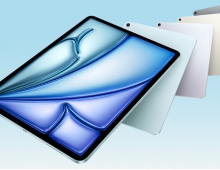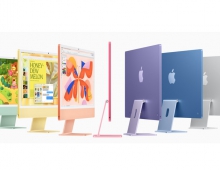
Apple Is Developing Its Own Micro-LED Screens
Apple is reportedly looking at Micro-LED technology for its future screens and is already designing and producing its own device displays for the first time.
The MicroLED screens use different light-emitting compounds than the current OLED displays and promise to make future gadgets slimmer, brighter and less power-hungry.
According to Bloomberg, Apple is already manufacturing small numbers of the new screens for testing purposes, meaning that consumers will probably have to wait a few years before seeing the results.
MicroLED screens will first be used for future Apple Watches, the report added.
Apple declined to comment.
Apple has been trying to bring the design of key components in-house. The company has designed chips powering its mobile devices for several years. But Apple's devices have been using displays from screen makers like Samsung Electronics, Japan Display, Sharp and LG Display.
Mass producing Micro-LED screens will require new manufacturing equipment and of course, significant invstments. Apple obviously has ther cash, but still the company could run into insurmountable hurdles and abandon the project or push it back.
Currently, the Apple Watch screen is made by LG Display. The iPhone X, Apple's first OLED phone, uses Samsung technology.
MicroLED screens contain millions of individual pixels. Each has three sub-pixels: red, green and blue LEDs. Each of these tiny LEDs must be individually created and calibrated. Each piece comes from what is known as a "donor wafer" and then are mass-transferred to the MicroLED screen.
Until MicroLED is ready for the world to see, Apple will still be all-in on OLED. The company plans to release a second OLED iPhone in the fall, a giant, 6.5-inch model, and is working to expand OLED production from Samsung to also include LG.
Other tech giants looking at the MicroLED technology include Taiwan's Hon Hai Precision Industry Co Ltd, Apple's main contract manufacturer. It acquired U.S. MicroLED display startup eLux Inc last year through Sharp and other group units.
Sony started selling large display systems using the technology for corporate users last year, and Samsung Electronics unveiled a MicroLED TV this January.
Unveiled at CES 2018, Samsung's 'The Wall' uses extremely small, micrometer-scale LEDs which makes it possible for the TV to be without the backlight and color filters. The LEDs act as the light source for this TV. According to Samsung, the new product boasts higher performance than previous TVs in almost every aspect including brightness, contrast, color representation, black level, viewing angle, and energy efficiency.
Due to the manufacturing method of attaching smaller LED chips to the substrate, the size and the shape of the TV can be assembled to the consumer's taste, which makes it the first modular TV in the world.
Another strength of the micro-LED TV is its durability. OLED TVs are prone to water and oxygen as it uses organic material and it is not free from screen burn-in which leaves a permanent mark on the display. In comparison to the OLED TV, micro LED TVs can be used for many purposes including indoors and outdoors by using inorganic substances.





















